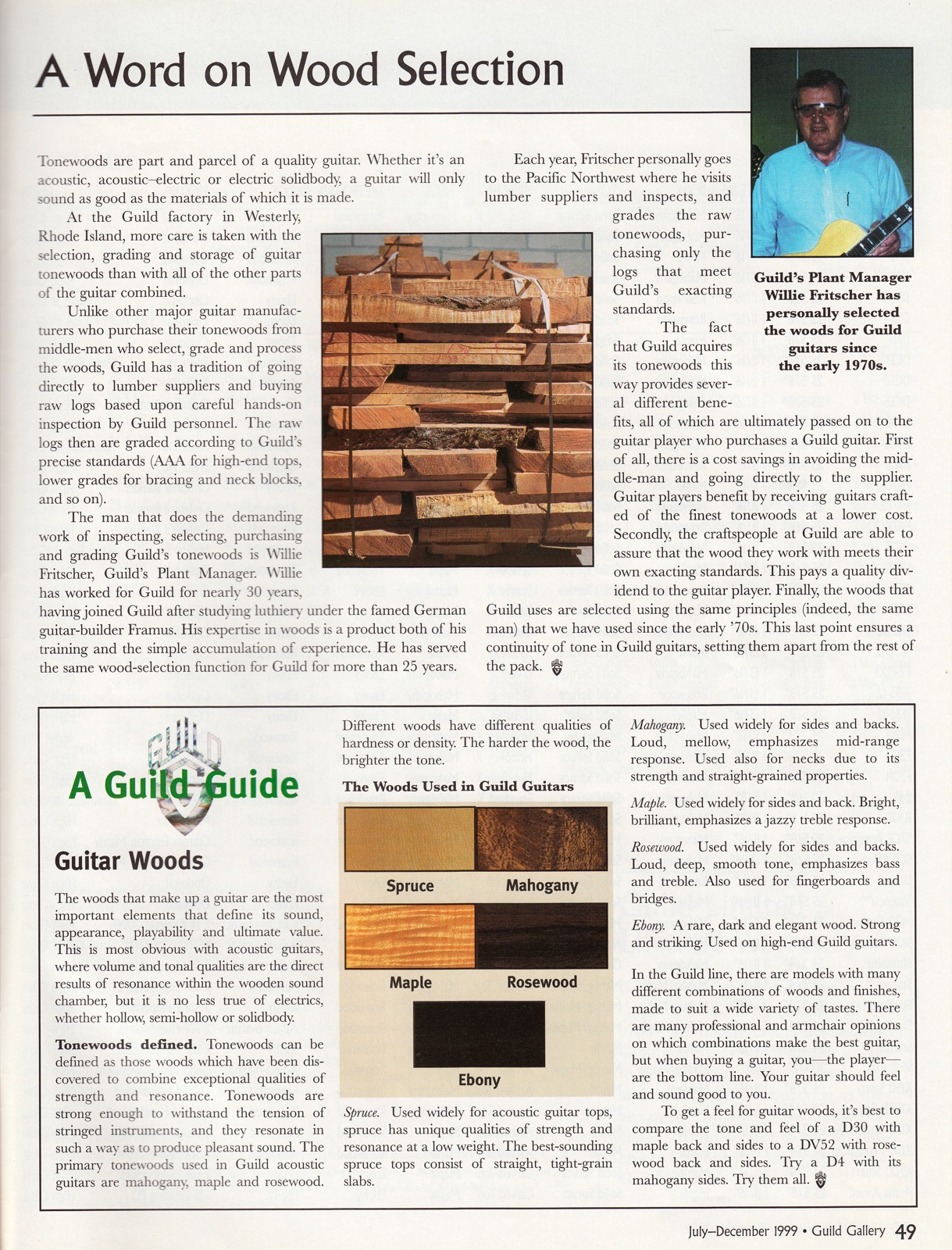First time I've heard that too, thanks Bernie.
It occurs to me it may not be the weight so much as the density of the material and how it absorbs vibration (or not)
I'm thinking they're like little nails and a lead nail might be a better "damper" than a steel one for example. (Ray's point)
ON reflection the weight thing makes sense too (although how much difference in mass could there really be?) and maybe the density is just another "variable" in the whole "equation".
Swapping 'em out on my Guilds just to see what happens has been one of those "bucket list" things I always forget about.
I agree.
I think using bridge pins that match the wood of the bridge can make a small improvement in a guitar's response. When the wood pins are similar, they are going to vibrate like the rest of the bridge vibrates, in the same spectrum.
It's not a matter of weight- it's a matter of similar mass.
After playing a D-28 side by side with a D-21 of the same age, I'm also convinced that a rosewood bridge w/ rosewood pins makes for a livlier and slightly more responsive guitar than one equipped with ebony parts. That was the only difference in the two guitar's bodies.
The D-21 was livelier, but some of it's sustain was sacrificed. Ebony is slower to respond, but it sustains longer and has a more equal vibrational range. Rosewood tends to drop out some lower-mid frequencies while boosting the higher-mids.
Both are very close in stiffness, but ebony is heavier.
Bone pins are both very stiff and very light weight when made of properly cured horse shin bone. I really like those pins a lot, and they can replace either type of wood pins very well. My D-60 has a set of them, but trying to find the horse bone is next to impossible these days, as all those horse by-products have been banned for use. (It was a law that was written to save the mustang slaughter. Mustangs were once killed and were sold for dog food and bone meal.)
I'ver tried fossilized ivory, but I suspect it's harder than bone because it's mineralized. And hella expensive. I haven't ever tried hard maple either, mostly because I've never owned an all-maple flat top. I think hard sugar maple would make a good bridge, but would probably have to be thicker in the center than the others.
I plan on spending a lot of time comparing my D-21 to the D-60 Guild I just got. Kim Walker shaved down the face of the D-60 bridge below the saddle slot considerably. The center of the bridge is still full thickness at the slot and pin holes, but just below the pin holes, about 1/3 of the bridge was shaved away. This lightens the bridge while retaining its full stiffness where it counts as proper support.
Walker knows his stuff for sure, but I was surprised the neck doesn't have a center strip of rosewood in the mahogany.
For sure, the D-60 is more responsive than a modern D-28. I haven't played it very much yet, but the guitar is extremely sensitive to the string vibrations. Playing it softly with a flatpick, the tone is very sweet, but when I put a bit of force into the pick it will roar instantly, and it never reaches compression when I strum it hard. Immense dynamic range.
That's much more about the top though, not just the bridge. The bridge does help, but the top is a really good piece of AAA prime spruce, cut straight on the quarter. It's not Adi, for sure- it's either European Alpine or Sitka, but I can't determine which it is.
My 1964 D-21 has an Adirondack top, and all Braz rosewood; body, bridge and fingerboard. It's the best sounding Martin dreadnought I've ever owned, but I don't like the neck shape; it's rather uncomfortable, and has a strange twist in the shape.
The Guild, though, is very comfortable in my left hand. I'm going to play it for a while to wake it up and get it back to doing business before I start comparing them side by side. I really like the Guild's focus a lot. I think it hadn't been played for a long time before it was put up for sale, and it still is a little sleepy.
